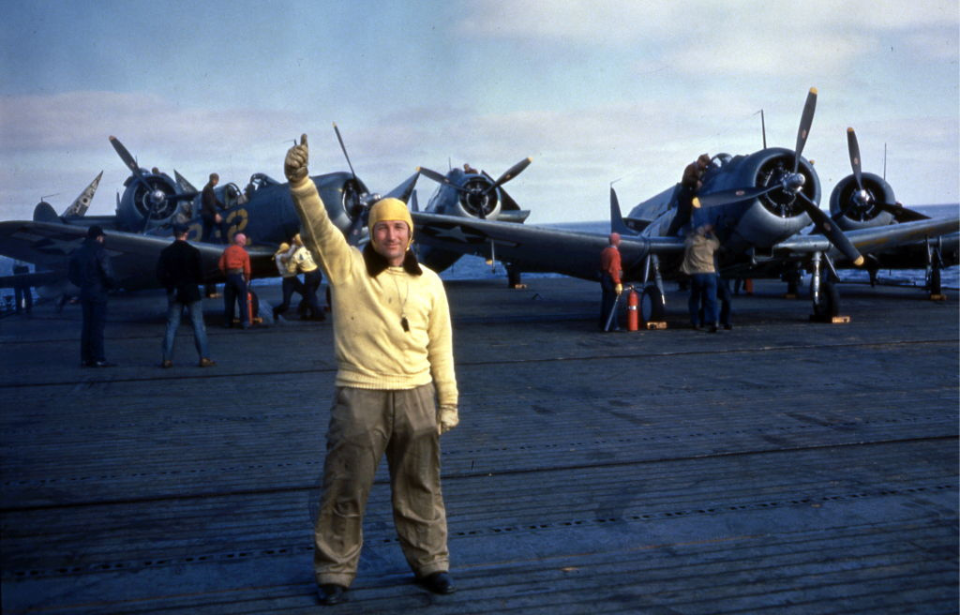Over the course of the Second World War, the Douglas SBD Dauntless, a naval scout aircraft and dive bomber, was deployed by the US Navy and Marine Corps. Despite being somewhat slower than other Allied aircraft, its outstanding effectiveness became evident, particularly showcased by its crucial role in the Battle of Midway.
Development of the Douglas SBD Dauntless
The foundation for the design of the Douglas SBD Dauntless can be traced back to the Northrop BT. Eventually, the Douglas Aircraft Corporation assumed control of the company and initiated construction of the SBD. Following various modifications, including the integration of the Wright R-1820 Cyclone engine, the dive bomber began production and entered service in mid-1939.
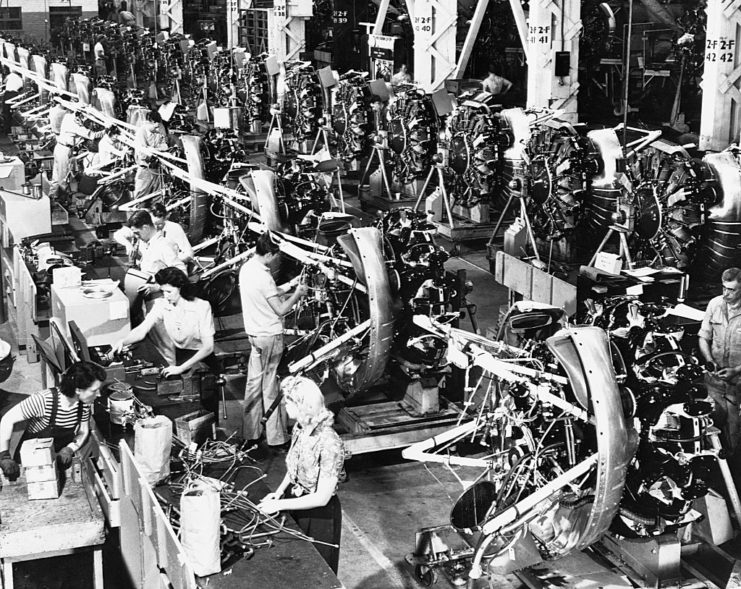
Douglas produced several variations of the SBD, such as the -1 and -2 models, which were supplied to the Marine Corps and Navy, respectively. It was somewhat unconventional for an aircraft intended for carrier-based operations, as it lacked the typical folding wings. This design choice by Douglas was driven by the desire to enhance the aircraft’s structural integrity.
The aircraft’s design was improved upon throughout World War II
Although the SBD Dauntless had proven its popularity as a dive bomber, modifications were initiated as early as 1941. The SBD-3 introduced enhancements in armor, fuel tanks and machine guns, while the SBD-4 focused on improvements to the aircraft’s electrical system. In addition, some were repurposed for reconnaissance missions, and the SBD-5 boasted a more potent engine and increased ammunition capacity.
The final variant in the series, the SBD-6, incorporated similar improvements. While both the Navy and Marine Corps adopted these common SBD types, the US Army Air Forces embraced the dive bomber for its own use, designating it as the Douglas A-24 Banshee.
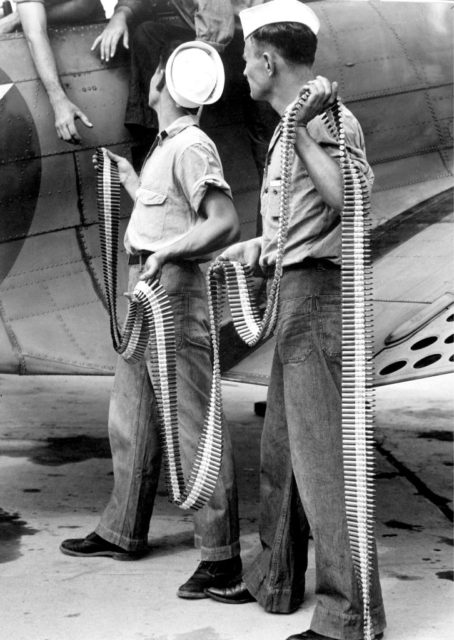
Pilots held a strong affection for the SBD, as it proved to be a user-friendly aircraft, boasting effective armament and capable performance against enemy fighters. Its armament included two forward-firing synchronized Browning M2s and two .3-inch Browning M1919s flexibly mounted in the rear, while it could carry a payload of 1,020 kg in bombs.
The Douglas SBD Dauntless made waves at the Battle of Midway
What the SBD Dauntless is best known for is its actions during the Battle of Midway. Throughout the battle, pilots flying the dive bombers delivered targeted attacks that greatly damaged the Japanese aircraft carriers positioned in the area.
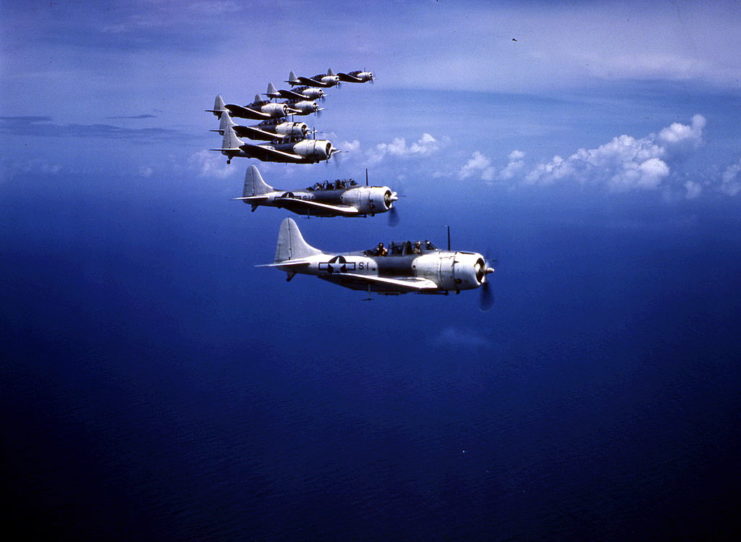
Between June 4-7, 1942, the Imperial Japanese Navy launched an attack against US naval forces near Midway Atoll, with the intention of causing some serious damage. Thanks to the work of cryptographers, however, the Americans were able to predict exactly when and where the attack would occur, allowing them to inflict a forceful blow, instead of taking unexpected damage.
A number of SBD squadrons flown by naval aviators were launched on the first day, disabling the carriers Akagi, Kaga and Sōryū in only six minutes.
An alternative outcome
The fourth Japanese aircraft carrier, Hiryū, only survived a short while longer, being sunk later the same day. Losing one ship, perhaps even two, would have been difficult for the Japanese, but to lose four was disastrous. The attacks launched by the SBD Dauntless squadrons made it difficult for them to continue, and they ended up withdrawing their forces.
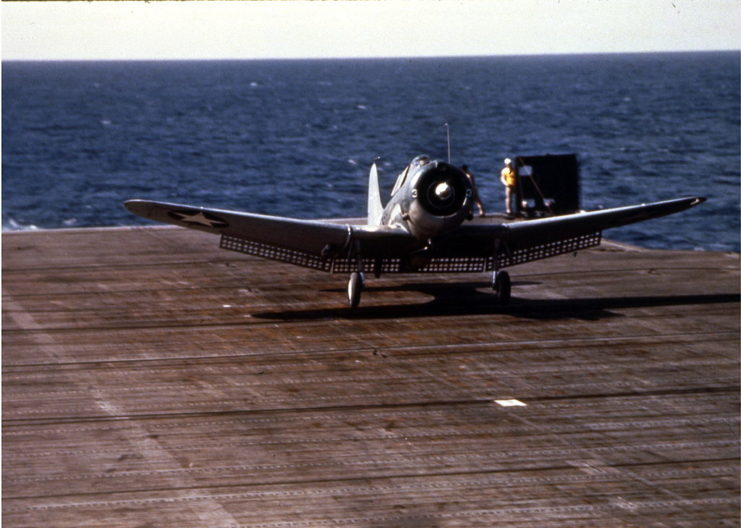
The role of the SBDs during the Battle of Midway cannot be overstated. Taking out every Japanese carrier involved in the attack played a pivotal role in securing an American victory. While the Japanese had heavy cruisers with them, they lost their ability to launch their aircraft directly into battle.
In fact, the SBDs were so important that, following the battle, the dive bombers earned the nickname, “Slow But Deadly,” a play on their initials.
Continued use of the Douglas SBD Dauntless
While the SBD Dauntless is generally considered to be one of the most important aircraft flown in the Pacific Theater, it saw use in other aspects of the Second World War. Along with seeing action during the Guadalcanal Campaign and the Battle of the Philippine Sea, the dive bombers were also flown during the Allied landings in North Africa and targeted attacks on German ships throughout Operation Leader.
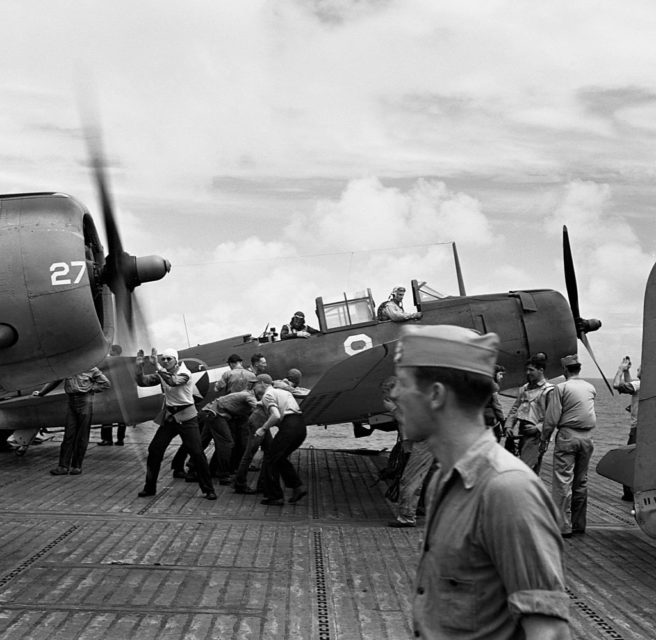
More from us: Northrop F-89 Scorpions Once Carried Nuclear Weapons to Combat Soviet Bombers
As the war came to a close, the SBD was transitioned out, in favor of the Curtiss SB2C Helldiver, despite the fact pilots preferred the trusted aircraft. They viewed the SB2C as a “Big-Tailed Beast,” which didn’t produce the same finesse as the SBD. Other countries in possession of the dive bomber continued to fly it sparingly. By the time it was officially retired, it had left behind a memorable legacy.
